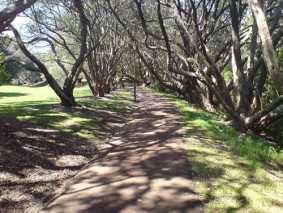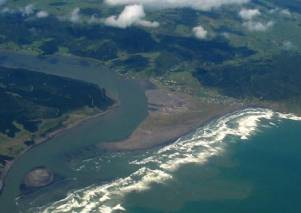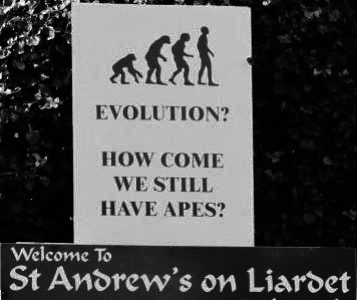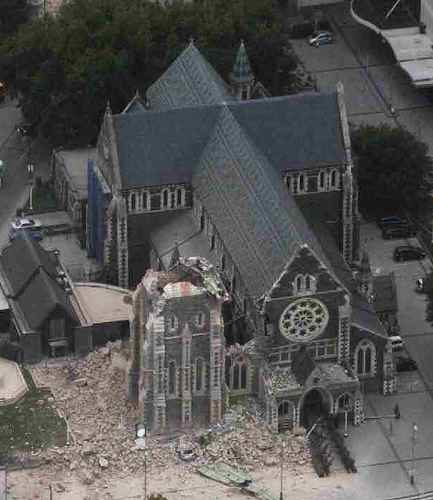Charter schools open door for creationism
Government plans to establish charter schools look like providing a way for creationists to get their teachings into New Zealand’s classrooms (Dominion Post, 19 August).
The Manukau Charitable Christian Trust is planning to team up with the Manukau Christian School to teach a “philosophy” titled ‘In God’s World’, to be marked against the Cambridge curriculum.
The philosophy encourages every subject to be taught so students “discover” how God made the world, and upholds and governs it.
Trust chairman Tony Bracefield said it planned to open a number of junior classes at churches, feeding up to senior classes on Manukau Christian School’s grounds. He said the school would use non-qualified teachers, and teach about 200 children in the long term.
Post Primary Teachers Association president Robin Duff said the types of people who appeared to be interested in charter schools would not have made it through teacher education.
” In the case of the trust, we’d be concerned if an organisation with a ‘statement of faith’ that denies evolution and claims creation according to the Bible is a historical event, were to receive state funding.”
He said the trust could be grouped with religious organisations like Destiny Church and the Maharishi Foundation, which had both expressed interest in charter schools, and which delivered education that denied scientific principles.
Associate Education Minister John Banks said he would not comment on the trust’s charter plans.
A day later, the NZ Herald (20 August) reported Banks had told Radio Rhema he has no doubts the first chapters of Genesis are true. “That’s what I believe, but I’m not going to impose my beliefs on other people, especially in this post-Christian society that we live in, especially in these lamentable times. There are reactionaries out there, humanists in particular, that overrun the bureaucracies in Wellington and state education.”
Racist creationists upset Kawerau
Meanwhile, many residents of Kawerau have been upset by a creationist pamphlet mail drop in the small Bay of Plenty town (NZ Herald, 22 September).
“Are you a racist? You are if you believe in evolution!” the pamphlet states. “Kids are taught in school that man evolved (changed) from a chimp. So I ask you who changed the most from a black chimp with black hair and brown eyes? A black man with black hair and brown eyes? Or a white man with blond hair and blue eyes?”
People who received the pamphlet should “rip it up and bin it,” said Vicki Hall, a spokeswoman for the Race Relations Commissioner. “The commission’s position is that the pamphlet is clearly offensive. However, there is no law that prevents someone from publishing it.”
While the pamphlet accuses those who “believe in evolution” of racism, it is based on the racist premise that black people look more like chimps than white people do. Yet two of the three chimp subspecies have fair skin, and Caucasians tend to be hairier than other peoples. The similarity between chimps and people of colour is all in the minds of the pamphlet’s producers, and the citizens of Kawerau were right to pick these mealy-mouthed hypocrites as racists.
Death’s link to vaccine ‘convoluted pseudoscience’
The likelihood of an Upper Hutt teenager having died as a result of the cervical cancer vaccine has been rejected as convoluted pseudoscience by Helen Petousi-Harris, of Auckland University’s Immunisation Advisory Centre (Dominion Post, 21 September).
Jasmine Renata, 18, died in her sleep in September 2009, six months after completing the programme for cervical cancer vaccine Gardasil.
She suffered from runny noses, headaches, warts, tiredness, a racing heart and other symptoms. During an inquest in August, her parents said they believed the vaccine was the cause of their daughter’s failing health and eventual death.
Canadian neuroscientist Christopher Shaw and US pathologist Sin Hang Lee told the inquest heavy aluminium staining in Ms Renata’s brain tissue could have acted as a “trojan horse”, bringing the human papillomavirus into her brain.
But Dr Petousis-Harris said on 20 September that the doctors’ arguments were convoluted and not based on scientific evidence. “I find that quite concerning, given the gravity of the issue here. Anyone who has had the vaccine may become worried, and anyone planning to have it may also become worried. But it’s based on no evidence at all, which is not good. You have got to make your decisions based on good science.”
It was important to discuss the weaknesses in the research so parents and possible vaccine recipients had all the information, she said.
There is further commentary on this case at Http://www.immune.org.nz/commentary-coronial-inquiry-expert-witness-testimony
Medium to ‘help heal’ Pike River pain
Australian medium Deb Webber, of Sensing Murder fame is once again in this country using a tragedy to promote her business (Greymouth Star, 16 August).
Webber, who caused anger in 2009 by raising the case of missing Auckland toddler Aisling Symes while plugging her shows on breakfast television (Aisling’s body was recovered from a stormwater pipe a few days later), has announced that this spring she will meet with family of Pike River disaster victims to help heal their pain with readings in a private session.
“I have been flooded with emails from family members so it will be nice to help them out,” Webber’s publicist said.
Given that Webber has no psychic ability (see NZ Skeptic 104), it’s uncertain exactly how she is going to be able to help at all.
Didgeridoo healing reaches NZ
Back in NZ Skeptic 102 Alison Campbell reported on how didgeridoos could be used to clear emotional and energetic stagnation, and help ” to quantum manifest healing and the co-creation of our universe.” Now this amazing medical breakthrough is available in New Zealand (Stuff, 6 September), thanks to yet more visitors from across the Tasman.
Australia-based psychic double act K and Dr Michael appeared in Auckland on 18 September. The US-born Dr Michael bills himself as a “vibrational healer with the didgeridoo” and a reiki master who “gives energy healing with past life and spirit healing messages”.
K on the other hand is “blessed with psychic abilities since childhood” and is said to be “one of Australia’s most sought after clairvoyants”. Must have been quite a night.
More Dunedin ghosts
Dunedin is emerging as the haunted capital of New Zealand. Following a series of ghostly events at Otago University’s Cumberland College ( NZ Skeptic 104) spirits are now reported to be occupying the nearby Globe Theatre ( Otago Daily Times, 2 July).
Five members of paranormal investigation group The Other Side Paranormal visited the theatre to follow up earlier research into three spirits believed to be there. The spirits were said to be those of Robert Blackadder, who lived in the building in the 19th century before it became a theatre, a girl called Mary Elizabeth Richmond who lived in the building in the 1860s, and former theatre caretaker Frank Grayson, who died in the 1980s.
“I think it’s safe to say the caretaker Frank is still there. He is just there looking after the place, basically. We’ve found a few things on our video footage … a few light anomalies,” said investigator Kelly Cavanagh.
There was also an “incident” when a person felt someone sit down next to them, and a photo revealed “energy” beside them. Other information gathered from an electromagnetic field reader, temperature gauge, and voice recorder would be analysed over the next week, Ms Cavanagh said. “We’ve definitely got some results and we are quite happy with what we’ve found.”




